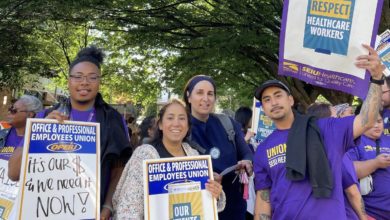In the New York Times on Dec. 20, Tara Parker-Pope writes an extensive article on the racial divide in breast cancer deaths.
In the 1980s, breast cancer survival rates for the two were nearly identical. But since 1991, as improvements in screening and treatment came into use, the gap has widened, with no signs of abating. Although breast cancer is diagnosed in far more white women, black women are far more likely to die of the disease…
“The big change in the 1990s was advances in care that were widely available in early detection and treatment,” said Steven Whitman, director of the Sinai Urban Health Institute in Chicago. “White women gained access to those advances, and black women didn’t…
“Over all, black women with a breast cancer diagnosis will die three years sooner than their white counterparts. While nearly 70 percent of white women live at least five years after diagnosis, only 56 percent of black women do. And some research suggests that institutions providing mammograms mainly to black patients miss as many as half of breast cancers compared with the expected detection rates at academic hospitals…
“Researchers from the Sinai Institute last year analyzed breast cancer cases in the country’s 25 largest cities and found that African-American women with breast cancer were, on average, 40 percent more likely to die of their disease than white women. In the United States, the disparity in breast cancer survival translates to about 1,700 additional deaths each year — or about five more black women dying every day.”
While Parker-Pope’s article tells a moving story about brave Black women with breast cancer and doctors pursuing an innovative community-based outreach campaign to try to address the disparity in screening and treatment, the raw facts are an indictment of the racism of capitalist “healthcare.”
One woman featured in the story, 57-year-old Mary Singleton, found out she has stage 4 cancer after she had a mammogram in response to a church-based outreach program.
“’It takes a while for the brain to process,” she said. “There’s a difference between what you heard about cancer, and now somebody is telling you that it’s your story.’
“After years without health insurance, she was told that her cancer treatment would be covered by Tenncare, the state’s Medicaid program.
“’I had to get cancer to get health insurance,” Ms. Singleton said, a tear rolling down her cheek. “I’ve been one of those people waiting for Obamacare, waiting for health insurance. And this is how I finally get it.’”
This is more than irony—this is what happens as a result of having a healthcare system that is based on generating profits for insurance and drug companies rather than on meeting human need.





